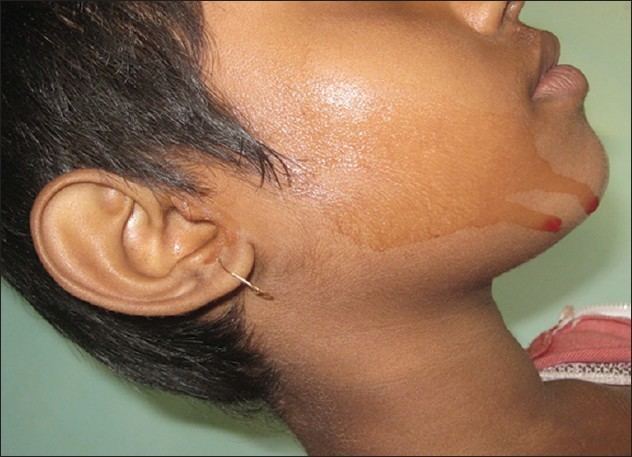ICD-10 Xxx.x | ICD-9-CM xxx | |
 | ||
Synonym blood sweat, haematidrosis, hematohidrosis, hemidrosis | ||
Hematidrosis, also called blood sweat, is a very rare condition in which a human sweats blood. The term is from Greek haima/haimatos αἷμα, αἵματος meaning blood and hidrōs ἱδρώς meaning sweat.
Contents
Signs and symptoms
Blood usually oozes from the forehead, nails, umbilicus, and other skin surfaces. In addition, oozing from mucocutaneous surfaces causing nosebleeds, blood stained tears, and vicarious menstruation are common. The episodes may be proceeded by intense headache and abdominal pain and are usually self-limiting. In some conditions, the secreted fluid is more dilute and appears to be blood-tinged, while others may have darker bright red secretions resembling blood.
While the extent of blood loss generally is minimal, hematidrosis also results in the skin becoming extremely tender and fragile.
Causes
Hematohidrosis is a condition in which capillary blood vessels that feed the sweat glands rupture, causing them to exude blood, occurring under conditions of extreme physical or emotional stress. Severe mental anxiety activates the sympathetic nervous system to invoke the stress-fight or flight reaction to such a degree as to cause hemorrhage of the vessels supplying the sweat glands into the ducts of the sweat glands. It has been suggested that acute fear and extreme stress can cause haematidrosis.
Diagnosis
Investigation such as platelets count, platelet aggregation test, coagulation profile and skin biopsy reveal no abnormalities and direct light microscopy of fluid demonstrates presence of normal red blood cells. Investigations also failed to show any vasculitis or skin appendages (i.e. sweat glands, sebaceous glands and hair follicles) abnormalities.
A 2015 case study investigated hematidrosis with a patient who has epilepsy.
Treatment
Effect on the body is weakness and mild to moderate dehydration from the severe anxiety and both blood and sweat loss.
The condition is very rare but there are reports in medical literature of successful treatment with beta blockers (propranolol 10 mg) with significant reduction in the frequency of spontaneous blood oozing. The successful use of beta blockers supports the theory that the condition is induced by stress and anxiety yet this etiology is not established yet as the high prevalence of stress and anxiety in the modern era did not change the incidence of this extremely rare disease, suggesting that other co-abnormality also play a key role in this disease. Atropine sulfate transdermal patches have also been used successfully.
Favorable results with psychiatric counselling to reduce stress highlight the relationship between psychogenic causes and hematohidrosis.
Instances
The New Testament indicates that Jesus underwent hematidrosis before the Crucifixion of Jesus, during the Agony in the Garden (Luke 22:44). These claims are plausible, given that the modern day dermatological research notes the presence of hematidrosis in people awaiting execution. It has also been proposed as a possible explanation for claims associated with stigmata.
Leonardo Da Vinci described a soldier who sweated blood before battle. The phenomenon has also been observed in individuals condemned to execution, a case occurring during the London blitz, and a case of fear of a storm while sailing, etc.
